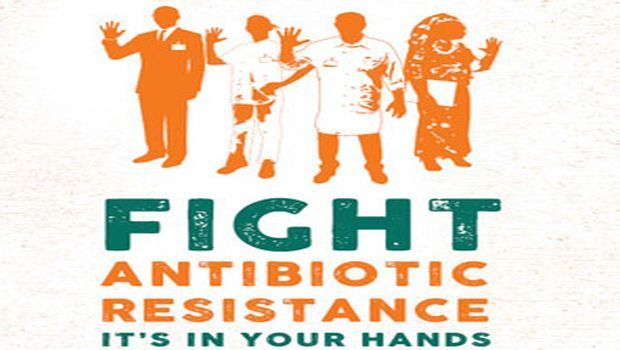Fight Antibiotic Resistance on World Hand Hygiene Day


World Hand Hygiene Day, marked globally on May 5, highlights the importance of hand hygiene in healthcare. The slogan of this year’s campaign is “Fight antibiotic resistance … it’s in your hands,” illustrating the important relationship between good infection prevention and control practices like washing your hands and preventing antibiotic resistance.
World Hand Hygiene Day plays an important role in highlighting good infection prevention and control practices to change behaviors to reduce the spread of infections and therefore save the lives of millions. Without behavior change, antibiotic resistance will remain a major threat.
Through this year’s campaign, the World Health Organization (WHO) is calling on countries and healthcare facilities to strengthen infection prevention and control programs based on WHO guidelines on core components of infection prevention and control programs. A key component of which is adequate hand hygiene, which plays a critical role in combating antimicrobial resistance.
“Health care-associated infections are one of the most frequent adverse events in health care delivery and are a major public health problem that affects hundreds of millions of people worldwide,” says Dr. Mahmoud Fikri, WHO regional director for the Eastern Mediterranean.
One out of every 10 patients gets an infection while receiving care, and up to 32 percent of patients receiving surgical care get a post-operative infection, of which up to 51% are resistant to treatment with antibiotics. WHO calls on policy-makers to stop antibiotic resistance spread by making infection prevention and hand hygiene a national policy priority.
WHO also calls on infection prevention and control leaders to implement WHO’s core components for infection prevention, including hand hygiene, to combat antibiotic resistance.
“Healthcare-associated infections cause harm and suffering that are easily avoided. They also result in additional financial burden and sometimes even long-term disabilities or death." Fikri added, “I urge all healthcare workers to ensure adequate hand hygiene and all health care facilities to join in the “SAVE LIVES: Clean Your Hands” campaign and commit to improving hand hygiene practices to help save more lives”.
Hospital administrators are expected to lead a year-round infection prevention and control program to protect their patients from resistant infections. Adequate hand hygiene reduces the risk of healthcare-associated infections and has the potential to save 8 million lives every year in hospitals alone. Clean hands make the health system a safer place to receive care.
Source: WHO
Tackling Health Care-Associated Infections: SHEA’s Bold 10-Year Research Plan to Save Lives
December 12th 2024Discover SHEA's visionary 10-year plan to reduce HAIs by advancing infection prevention strategies, understanding transmission, and improving diagnostic practices for better patient outcomes.
Point-of-Care Engagement in Long-Term Care Decreasing Infections
November 26th 2024Get Well’s digital patient engagement platform decreases hospital-acquired infection rates by 31%, improves patient education, and fosters involvement in personalized care plans through real-time interaction tools.
The Leapfrog Group and the Positive Effect on Hospital Hand Hygiene
November 21st 2024The Leapfrog Group enhances hospital safety by publicizing hand hygiene performance, improving patient safety outcomes, and significantly reducing health care-associated infections through transparent standards and monitoring initiatives.
The Importance of Hand Hygiene in Clostridioides difficile Reduction
November 18th 2024Clostridioides difficile infections burden US healthcare. Electronic Hand Hygiene Monitoring (EHHMS) systems remind for soap and water. This study evaluates EHHMS effectiveness by comparing C difficile cases in 10 hospitals with CMS data, linking EHHMS use to reduced cases.